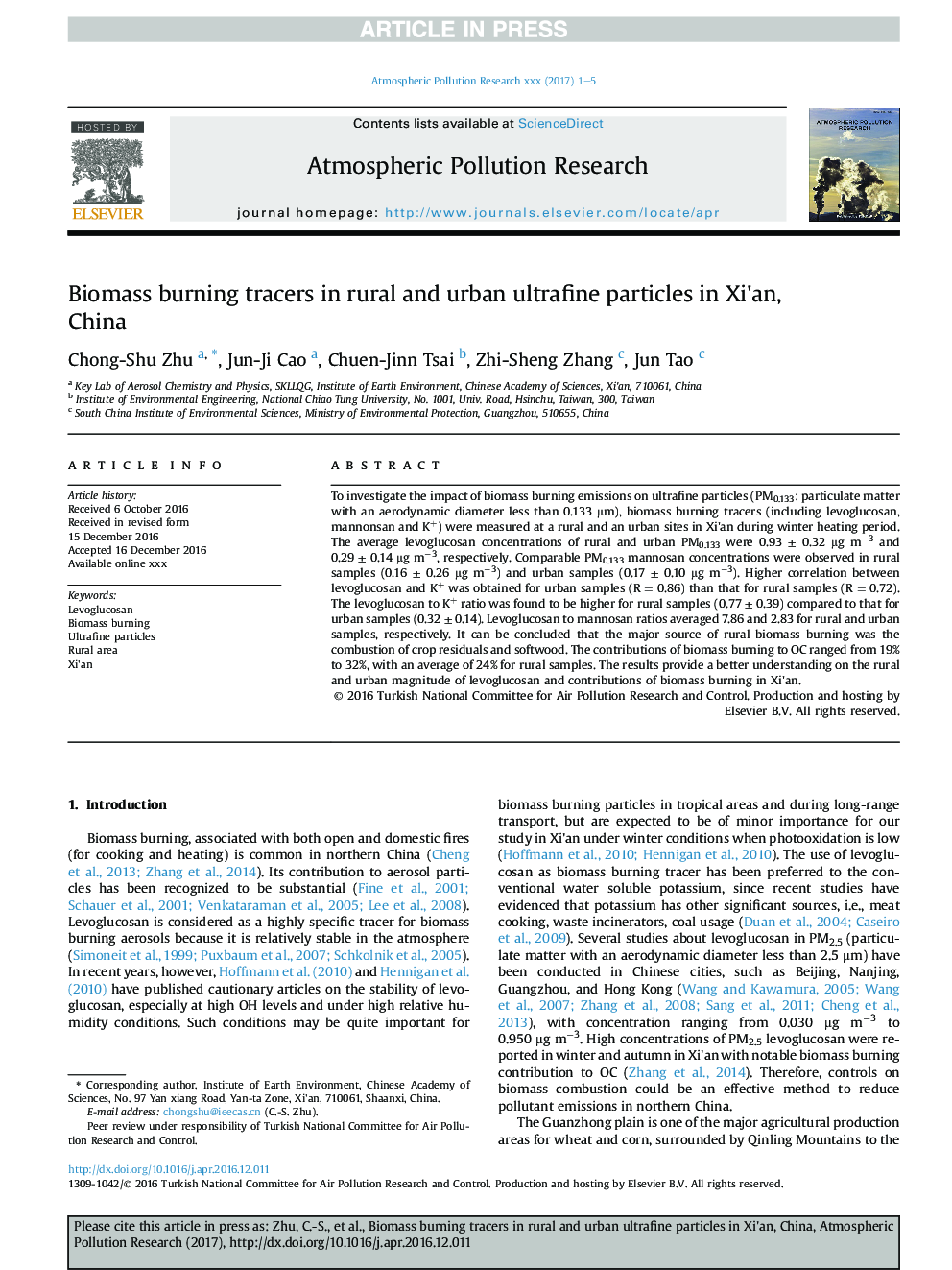| Article ID | Journal | Published Year | Pages | File Type |
|---|---|---|---|---|
| 8862727 | Atmospheric Pollution Research | 2017 | 5 Pages |
Abstract
To investigate the impact of biomass burning emissions on ultrafine particles (PM0.133: particulate matter with an aerodynamic diameter less than 0.133 μm), biomass burning tracers (including levoglucosan, mannonsan and K+) were measured at a rural and an urban sites in Xi'an during winter heating period. The average levoglucosan concentrations of rural and urban PM0.133 were 0.93 ± 0.32 μg mâ3 and 0.29 ± 0.14 μg mâ3, respectively. Comparable PM0.133 mannosan concentrations were observed in rural samples (0.16 ± 0.26 μg mâ3) and urban samples (0.17 ± 0.10 μg mâ3). Higher correlation between levoglucosan and K+ was obtained for urban samples (R = 0.86) than that for rural samples (R = 0.72). The levoglucosan to K+ ratio was found to be higher for rural samples (0.77 ± 0.39) compared to that for urban samples (0.32 ± 0.14). Levoglucosan to mannosan ratios averaged 7.86 and 2.83 for rural and urban samples, respectively. It can be concluded that the major source of rural biomass burning was the combustion of crop residuals and softwood. The contributions of biomass burning to OC ranged from 19% to 32%, with an average of 24% for rural samples. The results provide a better understanding on the rural and urban magnitude of levoglucosan and contributions of biomass burning in Xi'an.
Related Topics
Physical Sciences and Engineering
Earth and Planetary Sciences
Atmospheric Science
Authors
Chong-Shu Zhu, Jun-Ji Cao, Chuen-Jinn Tsai, Zhi-Sheng Zhang, Jun Tao,
